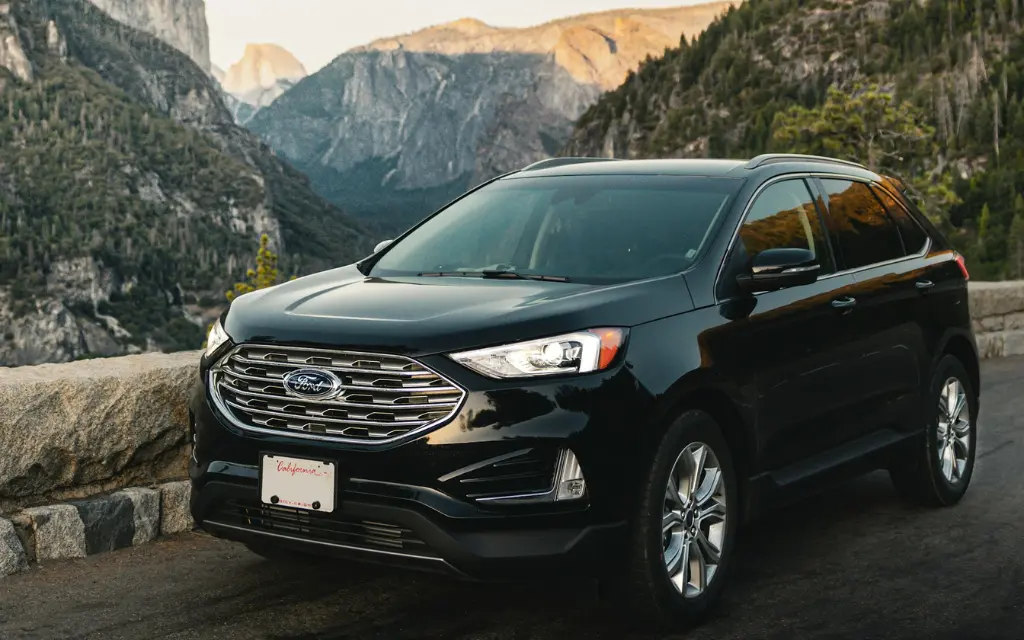What Does TPMS Mean on a Car? How Accurate it actually is?
If you’re like most drivers, you may have seen the acronym TPMS on your car’s dashboard and wondered what it means. It turns out TPMS is an essential piece of safety equipment that monitors your tire pressure.
TPMS have been standard features on new cars for over a decade now. But what does TPMS mean? And how accurate is the system, really? In this blog post, we answer those questions and more.
We cover everything from what TPMS stands for to how often you should check your tire pressure. If you’re considering retrofitting an older vehicle with a TPMS system, we’ve got you covered there too.
So read on to learn everything you need to know about Tire Pressure Monitoring Systems!

Use this table of contents for easy navigation through the article
> What Does TPMS Stand For, and What Does it Do on a Car Specifically
> Your Car May Have One of 2 Types of TPMS
> Direct TPMS
> Indirect TPMS
> What to Do if Your TPMS Warning Light is On
> How Accurate is the TPMS and how Often Should it be Checked
> What are the Benefits of Having a TPMS Installed on Your Vehicle
> How to Retrofit TPMS on Older Vehicles?
> How to Properly Maintain TPMS so That it Stays Accurate Over Time
> Conclusion
What Does TPMS Stand For and What Does it Do on a Car Specifically

TPMS is an acronym that stands for Tire Pressure Monitoring System. It is a system designed to monitor the air pressure in your tires and provide you with a warning if the pressure falls below a certain level.
This system can be extremely beneficial, as it can help to improve fuel efficiency and prevent flats. However, it is important to note that TPMS is not a replacement for regular tire maintenance.
In order to get the most benefit from this system, it is important to make sure that your tires are properly inflated on a regular basis.
Your Car May Have One of 2 Types of TPMS
There are two different types of TPMS systems: direct and indirect.
Direct TPMS

Direct TPMS uses sensors that are mounted on the wheel to measure the pressure in each tire. This gives the system more accurate readings, as each sensor is able to monitor its own tire independently. That can be valuable in preventing accidents.
The downside of the Direct TPMS is that it is more expensive than indirect system. This is because the direct system uses more complex parts, including sensors that must be mounted on each wheel. In addition, the Direct TPMS requires extra maintenance, as the sensors have batteries that usually last 5-10 years.
Indirect TPMS

Indirect TPMS uses the ABS brake system to measure the speed of each wheel and calculate the tire pressure based on that information.
This system is less accurate than direct TPMS, but it is also less expensive and not that complex. In addition, indirect TPMS is less likely to be damaged by road conditions since it does not rely on sensors mounted on the wheels.
However, indirect TPMS can only detect changes in pressure when the vehicle is moving, which means that it may not be as effective at detecting a slow leak.
What to Do if Your TPMS Warning Light is On
If your tire pressure light comes on, the first thing you should do is check your tire pressure manually with a gauge. If you detect low tire pressure, there is a good chance that your tire is punctured.
Take your car to the nearest car shop, and fix the puncture if possible or replace the entire tire if not.

Remember that if your tire is completely flat, you are not allowed to drive the car! You really want to replace the bad wheel with the spare one or call the road assistance, so they’ll take your vehicle to the shop.

After you are sure that the tires aren’t leaking, reset the TPMS light. The exact procedure for resetting the light will vary depending on the make and model of your vehicle, so consult your owner’s manual for specific instructions.
In most cases, however, you can press a button on the dash or use the steering wheel controls to access the TPMS menu. Once you’ve found the reset function, follow the prompts to complete the process.
How Accurate is the TPMS and how Often Should it be Checked
The TPMS is a great way to keep tabs on your tire pressures, but it’s not always 100% accurate. That’s why it’s important to do regular tire pressure checks every few weeks to be sure.
The system can sometimes give false readings if there’s a problem with one of the sensors or its battery is drained out. So it’s good to double-check from time to time. Plus, even if the system is working perfectly, tires can lose pressure gradually over time.
So it’s always a good idea to keep an eye on them. As long as you stay on top of things, the TPMS can be a helpful tool in keeping your tires in good shape.

What are the Benefits of Having a TPMS Installed on Your Vehicle

TPMS can be extremely beneficial, as proper tire pressure is essential for maintaining good fuel economy, improving handling, and preventing tire failure. A TPMS can also help extend your tires’ life by alerting you when they need to be refilled, so you can avoid driving on underinflated tires.
While all new vehicles sold in the United States are required to have a TPMS installed, older cars can also be retrofitted with aftermarket systems.
Therefore, if you’re looking for a way to improve your vehicle’s performance and save money on gas, consider installing a TPMS.
The U.S. government mandated TPMS in 2007, and all vehicles sold in the United States must be equipped with a TPMS.
There is a handy infographic show how correct and incorrect tire pressure affects a car’s mileage, driving comfort, stability, and tire wear:

How to Retrofit TPMS on Older Vehicles?

If you are interested in adding a TPMS to your older vehicle, there are a few things you need to know.
- First, you will need to purchase a TPMS kit that is compatible with your vehicle. These kits typically include sensors that mount onto the tires and a receiver that mounts inside the car.
- Once you have bought the right TPMS, the next step is to install the sensors. The sensors must be mounted on the inside of the wheel and properly calibrated to ensure accurate readings.
- The final step is to install the receiver that will display the tire pressure information from the sensors. The receiver can be mounted in the dash or console, and it must be connected to the power supply and antenna.
Retrofitting a TPMS can be a challenging but rewarding project, and it can help you ensure safety on the road.
How to Properly Maintain TPMS so That it Stays Accurate Over Time
Over time, the sensors in TPMS can become inaccurate, leading to problems down the road. Thankfully, you can do a few things to keep your TPMS accurate.
- First, make sure to check the manufacturer’s recommended tire pressure levels for your car. You can usually find this information in the owner’s manual.
- Next, check the air pressure in your tires regularly and adjust as needed.
- Finally, have your TPMS checked by a professional at least once a year to ensure accuracy. You may need to replace the sensors if the mechanic detects a drained battery on them.
Following these simple steps can help keep your TPMS accurate over time.

Conclusion

A TPMS can be beneficial in maintaining proper tire inflation, which can improve fuel economy and extend the life of your tires. If you have a TPMS installed on your car, it’s important to maintain it properly to remain accurate over time.
Do you have a TPMS on your car? Let us know in the comments below!
Victor
BOOK YOUR WINDSHIELD REPLACEMENT
Related Articles

Behind the Wheel: A Guide to Driving Glasses
Safe navigation on the road demands sharp visual perception. As you continue reading, discover how you can benefit from enhanced visual clarity.

Cadillac Escalade Windshield Replacement Guide
Join me on journey through the pinnacle of luxury and innovation with our Cadillac Escalade Windshield Guide, where safety meets sophistication on every road.

Ford Edge Windshield Replacement Service
When your reliable Ford Edge encounters windshield problems, it’s essential to seek professional help quickly to ensure safe and smooth driving experiences.

